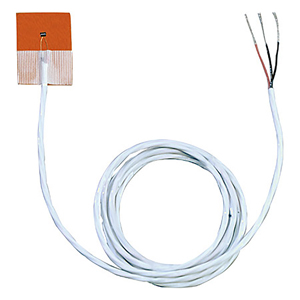The resistance vs temperature relationship is well known and is repeatable over time.
Rtd temp probe wiring.
Rtd sensor in 2 wire circuit.
Learn the differences between 2 wire 3 wire and 4 wire rtd s and which one you should choose for your measurement needs.
With the 4 wire configuration the instrument will pass a constant current i through.
The material has an accurate resistance temperature relationship which is used to provide an indication of temperature.
Rtd circuits work by sending a known amount of current through an rtd sensor and then measuring the voltage drop across that resistor at the given temperature.
An rtd is a passive device.
Cable resistance of up to 15 ω can be handled.
The best configuration for a specific application depends on a number of factors however the sensor configuration must match with transmitter otherwise leadwire resistance cancellation circuitry.
The above wheatstone bridge method uses a little more copper wire and is not a perfect solution.
The classical resistance temperature detector rtd construction using platinum was proposed by c h.
The 5437 2 wire hart temperature transmitter the 5337 2 wire transmitter with hart protocol and the 6337 2 wire hart transmitter can be programmed with these coefficients precisely matching the transmitter to a characterized rtd for exceptional measurement accuracy.
A resistance temperature detector rtd is a temperature measurement device that accurately uses resistance to measure temperature.
An rtd resistance temperature detector is a sensor whose resistance changes as its temperature changes.
This construction minimized strain on the wire while maximizing resistance.
Below is a better configuration four wire kelvin connection.
Difference between 2 wire rtd 3 wire rtd and 4 wire rtd s rtds resistance temperature detectors are offered with 2 3 or 4 lead configuration.
Rtd sensor in 2 wire circuit.
1 convert to 3 wire circuit which will essentially eliminate the ambient temperature effects 2 convert to a 4 wire circuit in this case connection lead resistance effects completely eliminated.
1 convert to 3 wire circuit which will essentially eliminate the ambient temperature effects 2 convert to a 4 wire circuit in this case connection lead resistance effects completely eliminated.
The rtd wire is a pure material typically platinum nickel or copper.
As rtd elements are fragile they are often housed in protective probes.
The connection lead are subjected to a large temperature change.
The connection lead are subjected to a large temperature change.
He wound a helical coil of platinum on a crossed mica web and mounted the assembly inside a glass tube.
It provides full cancellation of spurious effects.
The resistance increases as the temperature of the sensor increases.

